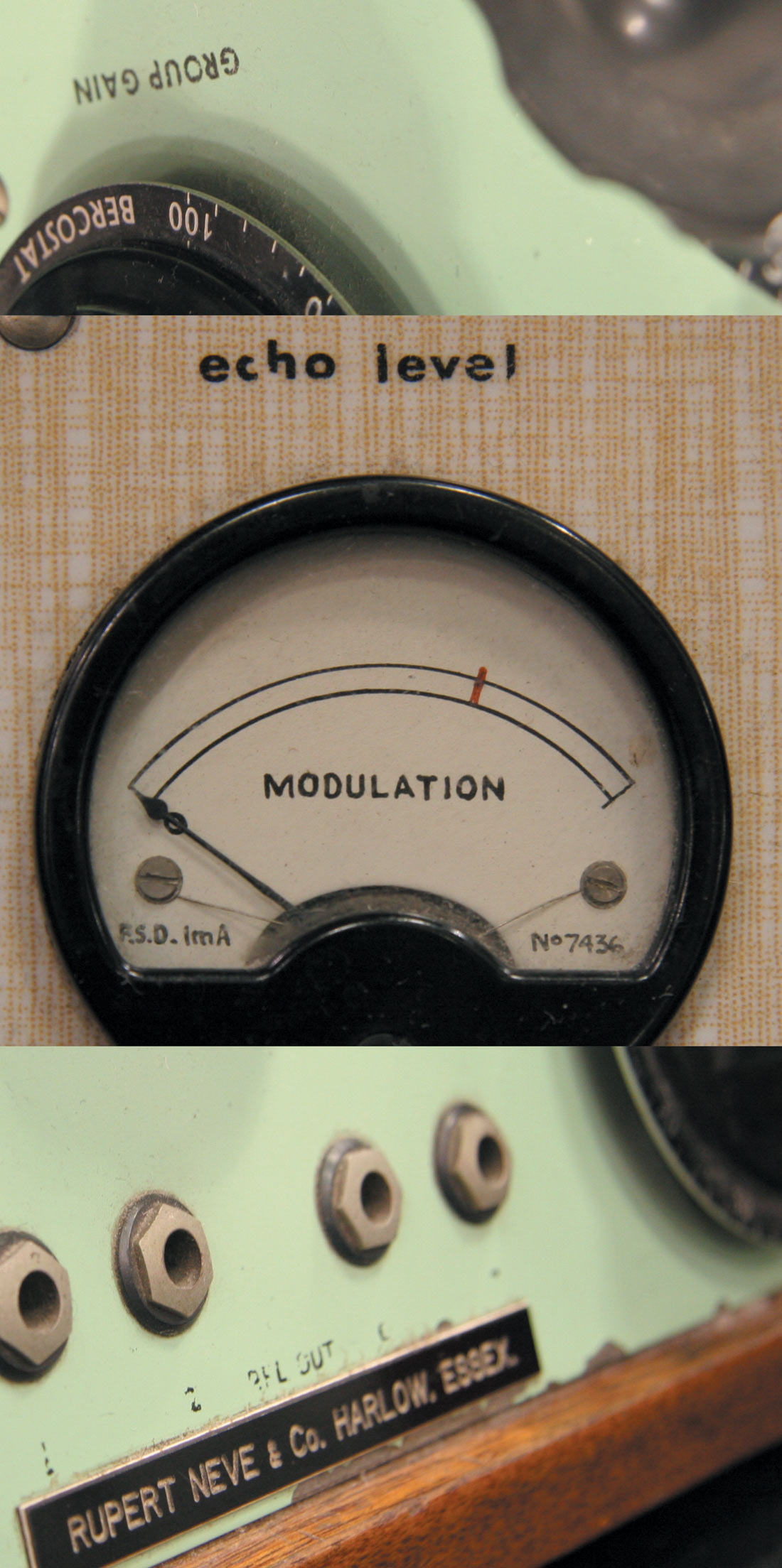This past summer, I helped mix Nedelle's latest home-recorded album at JB's Hangar Studios through his Neve broadcast console onto tape. On the morning of the first day, John strapped a Thermionic Culture Phoenix stereo tube compressor across the stereo drums coming out of Pro Tools. It sounded great and really gave the drums some wonderful "boom" and "splat"!!! Except I immediately noticed some compression artifacts when I turned up the whompy and uncentered kick drum, which proceeded to punch holes in the rest of the drum mix (something I like to call "compressor suck") and pull the whole image to one side. When something like this happens while I'm mixing in my own studio, I usually turn to the Mid/Side encoders that are available on every fader of my Sony DMX-R100 console and use them to do some M/S dynamics processing. So my first thought was to recreate a full M/S and L/R matrix pair in Pro Tools, but that would have required coming back into PT and therefore a second round of A-D-A conversions if we continued to use the Phoenix. That's when John pulled out the Groove Tubes MS.
As its name implies, the MS is a box that takes Mid and Side line-level signals and encodes them to Left and Right. It also includes a pot to vary the width of the stereo image. The box is marketed as a recording encoder-set up two mics in M/S configuration, take their preamp outputs and feed the MS, and out of the MS you get a normal L/R stereo signal, with stereo width control to boot! If you've never tried M/S recording, you should. You'll be amazed at how much control you have over the stereo image while still retaining a signal that folds to mono with 100% predictability. In this situation, I chose to use the MS for M/S processing of an already recorded signal.
I slapped together an L/R to M/S matrix in Pro Tools, and then output that through a Rosetta 800 to the Phoenix, which in turn fed the MS before landing on two faders of the Neve. Problem solved! I could turn up the kick as much as I wanted without impacting the stereo image or causing too much compressor suck. In fact, I ended up really slamming the Mid and lightly compressing the Side, which really evened out the drums nicely, while still keeping the image stable. John noticed a bit of low-end loss due to this setup, and he mentioned that when he opened up the MS, he saw a bunch of TL072 opamps-not the most highly-regarded ICs (but somewhat of a standard in audio design). So I did a quick bit of repatching and auditioned the MS without the Phoenix, and I did indeed hear what I thought was low-end loss passing a completely mono signal through the MS versus around it. (Later, the guys at Groove Tubes explained to me that what we were hearing was "not so much a reduction in the low-end as such, but rather an increase in the opamp crunchy-tinkly sound from the TL072/LF353 parts. The opamps can produce an effect where the apparent level of sounds above about 200 Hz seem to be made louder (depends on the particular amp and application), but this does not show up in measurements in the lab!")
But for me, the ability to do M/S processing and convert back to L/R while staying all analog outweighed the slight loss of fidelity that we experienced. Sure, I could have used the three-fader trick to implement the M/S to L/R matrix, but we didn't have any extra faders on the Neve, and I doubt that the Neve (or most analog consoles, for that matter) would have the consistency fader-to-fader to do a perfect M/S matrix without some loss of image stability. The MS was the near-perfect problem solver for us. Note that it can also do the reverse L/R to M/S conversion-because the "math" is the same-so with a pair of MS boxes, you could implement an M/S insert path for any stereo signal. ($699 MSRP; www.groovetubes.com)
Tape Op is a bi-monthly magazine devoted to the art of record making.




_disp_horizontal_bw.jpg)